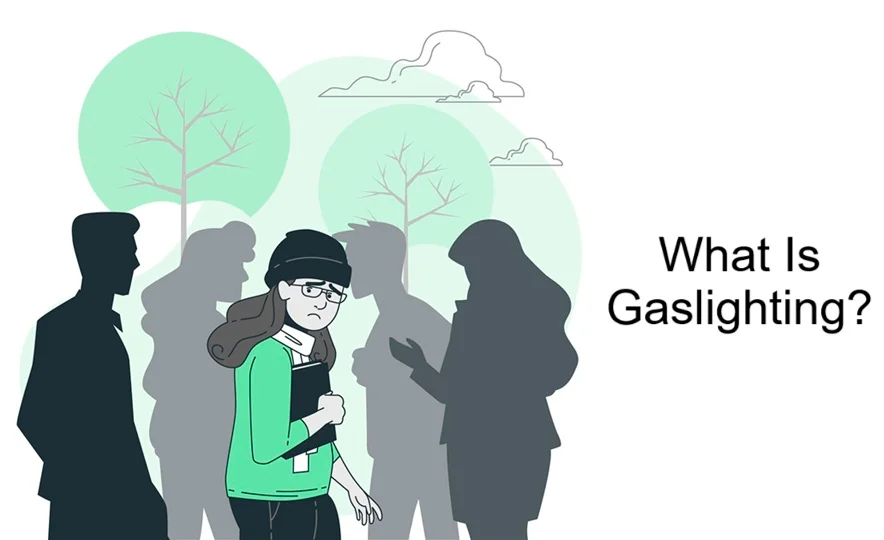
Understanding the Manipulative Tactic That Undermines Reality
In today’s increasingly mental-health-aware society, terms like “toxic,” “narcissism,” and “gaslighting” have become part of everyday conversations. But while these words are widely used, they are often misunderstood. Among them, gaslighting is perhaps the most damaging and insidious—because it erodes the very thing we rely on to make sense of the world: our perception of reality.
In this article, we will explore what gaslighting is, its origins, signs, examples, effects, and how to protect yourself or others from it.
Definition: What Is Gaslighting?
Gaslighting is a form of psychological manipulation in which a person or group causes someone to doubt their own perceptions, memories, or sanity. It involves persistent lying, denial, contradiction, or misdirection to make the victim question their reality.
In simpler terms: Gaslighting is when someone convinces you that what you know to be true is actually false, making you second-guess yourself.
This manipulative tactic is common in abusive relationships, but it can also happen in workplaces, families, or even in societal and political contexts.
Origin of the Term “Gaslighting”
The term originates from the 1938 British stage play Gas Light, later adapted into films in 1940 and 1944. In the movie, a husband tries to drive his wife insane by diming the gas lights and denying it when she notices the change. His goal is to make her believe she is losing her mind—so he can have her institutionalized and steal her inheritance.
Since then, “gaslighting” has become a psychological term used to describe similar manipulation in real life.
How Gaslighting Works
Gaslighting works by gradually chipping away at a person’s self-trust. Over time, the victim begins to rely more on the abuser’s version of reality than their own.
Here’s how it typically unfolds:
- Denial – The manipulator denies that an event or conversation took place.
- Contradiction – They contradict your memory: “You’re remembering it wrong.”
- Trivialization – They downplay your feelings: “You’re being too sensitive.”
- Projection – They blame you for things they’re doing: “You’re the one who’s manipulating me!”
- Diversion – They change the subject or question your thoughts: “Why are you always so paranoid?”
- Repetition – Repeated lies become persuasive over time.
Common Signs of Gaslighting
If you’re being gaslighted, you may experience the following:
- Constantly second-guessing yourself
- Apologizing excessively
- Feeling confused or “crazy”
- Trouble making simple decisions
- Loss of confidence or self-esteem
- Feeling isolated or dependent on the abuser
- Feeling like something is wrong, but being unable to identify it
- Thinking you’re too sensitive or emotional (as you’re often told)
Real-Life Examples of Gaslighting
1. In Personal Relationships:
A partner cheats but denies it repeatedly, even when confronted with evidence. They might say:
- “You’re imagining things.”
- “You’re jealous for no reason.”
- “You’re too insecure, it’s ruining our relationship.”
2. At the Workplace:
A boss may claim you never submitted a report or didn’t follow instructions, even when you did. When you protest, they may say:
- “You must be confused.”
- “You’re overreacting again.”
- “You’re not remembering correctly.”
3. In Family Dynamics:
A parent insists you were never mistreated as a child, even when you clearly remember abuse or neglect. They may say:
- “You always had everything.”
- “You’re making things up for attention.”
4. In Politics or Media:
A government official denies saying something that was recorded or documented, causing the public to question their own understanding of truth.
Psychological Effects of Gaslighting
Prolonged gaslighting can have severe emotional and psychological consequences, such as:
- Anxiety and depression
- Identity crisis
- Emotional dependence on the abuser
- PTSD (Post-Traumatic Stress Disorder)
- Difficulty trusting others
- Cognitive dissonance: holding contradictory beliefs and being unsure which is true
💡 Is Gaslighting Intentional?
In most cases, yes. Gaslighting is a deliberate attempt to gain control over another person’s thoughts or behavior. However, some people may gaslight unconsciously—mimicking behaviors they witnessed in childhood or previous toxic relationships.
🛡️ How to Deal With Gaslighting
If you suspect you are being gaslighted, here are steps to take:
1. Document Everything
Keep a written or digital log of conversations, events, texts, and actions that you can refer back to.
2. Trust Your Feelings
Your emotions are valid. If something feels wrong, don’t dismiss it.
3. Seek Outside Perspective
Talk to trusted friends, family, or a mental health professional. An external perspective can validate your experience.
4. Set Boundaries
Say no to manipulation and learn to disengage from the cycle. Gray-rocking (acting unresponsive and emotionally neutral) can help.
5. Get Professional Help
Therapists can help you rebuild your confidence and support you in taking steps to exit abusive environments.
Common Phrases Used in Gaslighting
Here are some typical lines used by gaslighters:
- “You’re too sensitive.”
- “That never happened.”
- “You’re crazy.”
- “You’re imagining things.”
- “You always twist things around.”
- “No one else thinks that but you.”
- “You’re remembering it wrong.”
Recognizing these red flags early can be the key to protecting your mental health.
🧭 Final Thoughts: Recognizing & Healing from Gaslighting
Gaslighting is not just manipulation—it’s emotional abuse. Its goal is to dismantle your reality, making you easier to control. But knowledge is power. By recognizing gaslighting for what it is, you begin the journey toward reclaiming your truth, rebuilding your self-esteem, and breaking free from manipulation.
Whether it’s a romantic relationship, a toxic workplace, or a manipulative parent, always remember: your reality matters. You have the right to your thoughts, your emotions, and your truth.







